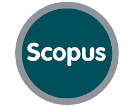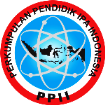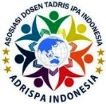Scientific Literacy as a Differentiated Learning Strategy to Improve Students Science Literacy Competence
Abstract
Keywords: science literacy, student competence, human movement system, learning effectiveness
Full Text:
PDFReferences
Anonim. (2023). Peringkat Indonesia pada PISA 2022 Naik 5-6 Posisi Dibanding 2018. Kementerian Pendidikan Dan Kebudayaan Nomor: 697/Sipers/A6/XII/2023.
Aquino, J., Caingcoy, W., Zamora, R., & Diquito, T. J. (2025). Scientific Literacy Assessment Using Bybee ’ s Scientific Model : Towards a More Sustainable Science Education. Journal of Arts, Humanities and Social Science (JAHSS), 2(1), 8–21. https://doi.org/10.3006-949169739/jahss.v2i1.207
Carpendale, J. I. M., Lewis, C., & Müller, U. (2020). Piaget’s Theory. In The Encyclopedia of Child and Adolescent Development (pp. 1–11). https://doi.org/https://doi.org/10.1002/9781119171492.wecad100
Council, N. R. (2000). How People Learn: Brain, Mind, Experience, and School: Expanded Edition. The National Academies Press. https://doi.org/10.17226/9853
Duschl, R. A., & Osborne, J. (2002). Supporting and Promoting Argumentation Discourse in Science Education. Studies in Science Education, 38(1), 39–72. https://doi.org/10.1080/03057260208560187
Erduran, S., Osborne, J., & Simon, S. (2005). The Role of Argumentation in Developing Scientific Literacy BT - Research and the Quality of Science Education (K. Boersma, M. Goedhart, O. de Jong, & H. Eijkelhof (eds.); pp. 381–394). Springer Netherlands. https://doi.org/10.1007/1-4020-3673-6_30
Fauzia, R., & Ramadan, Z. H. (2023). Implementasi Pembelajaran Berdiferensiasi dalam Kurikulum Merdeka. Jurnal Educatio FKIP UNMA, 9(3), 1608–1617. https://doi.org/10.31949/educatio.v9i3.5323
Hake, R. R. (1998). Interactive-Engagement Versus Traditional Methods: A Six-Thousand-Student Survey of Mechanics Test Data for Introductory Physics Courses. American Journal of Physics, 66(1), 64–74. https://doi.org/10.1119/1.18809
Hurd, P. De. (1958). Science Literacy: Its Meaning for American Schools. Educational Leadership, 16(1), 13–16.
Kemenag. (2022). Framework Asesmen Kompetensi Madrasah Indonesia (AKMI) 2022 (K. 2 R. MEQR (ed.); 1st ed.). Direktorat KSKK Madrasah Ditjen Pendidikan Islam.
Kolb, D. (1984). Experiential Learning: Experience As The Source of Learning and Development. In Prentice Hall, Inc. Prentice Hall.
Kuhn, D., & Dean, D. (2005). Is Developing Scientific Thinking All About Learning to Control Variables? Psychological Science, 16(11), 866–870. https://doi.org/10.1111/j.1467-9280.2005.01628.x
Litina, S., & Rubene, Z. (2024). The Effect of Digital School Culture on Science Education and Scientific Literacy: A Scoping Review. Journal of Education Culture and Society, 15(1), 41–55. https://doi.org/10.15503/jecs2024.1.41.55
Marlina. (2019). Panduan Pelaksanaan Model Pembelajaran Berdiferensiasi di Sekolah Inklusif. Universitas Negeri Padang. http://repository.unp.ac.id/23547/1/2019 Buku Panduan Model Pembelajaran Berdiferensiasi di sekolah inklusif.pdf
Merrydian, S., Rahayu, W., & Rahmawati, Y. (2025). Dimensions of The Science Literacy Learning Environment : Systematic Literature Review Using The Prisma Method. International Journal of Social and Education (INJOSEDU), 2(1), 31–43.
Nugraha, I., Putri, N. K., & Sholihin, H. (2020). An Analysis of the Relationship between Students’ Scientific Attitude and Students’ Learning Style in Junior High School. Journal of Science Learning, 3(3), 185–195. https://doi.org/10.17509/jsl.v3i3.22873
OECD. (2023). PISA 2025 Science Framework. Oxford University Press. https://pisa-framework.oecd.org/science-2025/assets/docs/PISA_2025_Science_Framework.pdf
Pitaloka, H., & Arsanti, M. (2022). Pembelajaran Diferensiasi dalam Kurikulum Merdeka. Seminar Nasional Pendidikan Sultan Agung Ke-4, November, 34–37. http://jurnal.unissula.ac.id/index.php/sendiksa/article/view/27283
Priadana, S. M., & Sunarsi, D. (2021). Metode Penelitian Kuantitatif. Pascal Books.
Rizalia, S., Fahrizi, Z., & Sukmawati. (2024). The Significance of Science Literacy in Biology Learning. Kulidawa, 5(1), 1–17. https://doi.org/https://dx.doi.org/10.31332/kd.v5i1.8459
Santos, B. S. F., Murti, R. C., Limiansih, K., & Tahu, G. P. (2023). Scientific Literacy in Hybrid Learning with the STEM Approach for the Students of Primary School Teacher Education. QALAMUNA: Jurnal Pendidikan, Sosial, Dan Agama, 15(2), 657–666. https://doi.org/10.37680/qalamuna.v15i2.2839
Strat, T. T. S., Henriksen, E. K., & Jegstad, K. M. (2024). Inquiry-based Science Education in Science Teacher Education: A Systematic Review. Studies in Science Education, 60(2), 191–249. https://doi.org/10.1080/03057267.2023.2207148
Tilamsari, B. Y., Komarayanti, S., & Purwaningsih, S. (2023). Implementasi Pembelajaran Berdiferensiasi Melalui PBL untuk Meningkatkan Kemampuan Literasi Sains Siswa Kelas X.3 SMAN Rambipuji. ScienceEdu Jurnal Pendidikan IPA, 6(1), 48–54. https://doi.org/10.19184/se.v6i1.40001
Vygotsky, L. S. (1978). Mind in society. The development of higher psychological processes. Harvard University Press.
Wang, M., & Degol, J. (2013). Motivational Pathways to STEM Career Choices. Using Expectancy-Value Perspective to Understand Individual and Gender Differences in STEM Fields, 33(4), 304–340. https://doi.org/10.1016/j.dr.2013.08.001.Motivational
Wiyarsi, A., Prodjosantoso, A. K., & Nugraheni, A. R. E. (2021). Promoting Students’ Scientific Habits of Mind and Chemical Literacy Using the Context of Socio-Scientific Issues on the Inquiry Learning. Frontiers in Education, 6(May), 1–12. https://doi.org/10.3389/feduc.2021.660495
Yusmaliana, D., Kurbiyanto, A., Zakaria, G. A. N., & Petra, P. D. H. N.-A. binti P. H. (2024). Green Minds, Sacred Paths: Nurturing Environmental Affection Through Islamic Education and Creative Imagination BT - Environmental Sustainability and Resilience: Policies and Practices (A. Sharifi (ed.); pp. 289–310). Springer Nature Singapore. https://doi.org/10.1007/978-981-97-6639-0_17
Yuyu, Y. (2017). Literasi Sains dalam Pembelajaran IPA. Jurnal Cakrawala Pendas, 3(2), 21–28. https://doi.org/http://dx.doi.org/10.31949/jcp.v3i2.592
DOI: http://dx.doi.org/10.24014/jnsi.v8i2.36163
Refbacks
- There are currently no refbacks.

Journal of Natural Science and Integration
E-ISSN: 2620-5092 P-ISSN: 2620-4967
Published By:
Department of Science Education, Faculty of Education and Teacher Training,
State Islamic University of Sultan Syarif Kasim Riau, Indonesia
Mailing Address:
Jl. H.R Soebrantas Km. 15 No. 155
Kelurahan Simpang Baru
Kecamatan Tuah Madani, Pekanbaru, Riau, Indonesia
Email: jnsi.tadrisipa@uin-suska.ac.id
Indexed By:
Journal of Natural Science and Integration is licensed under a Creative Commons Attribution 4.0 International License.


_-_Copyy2.png)






.jpg)
.png)
.jpg)
.jpg)




